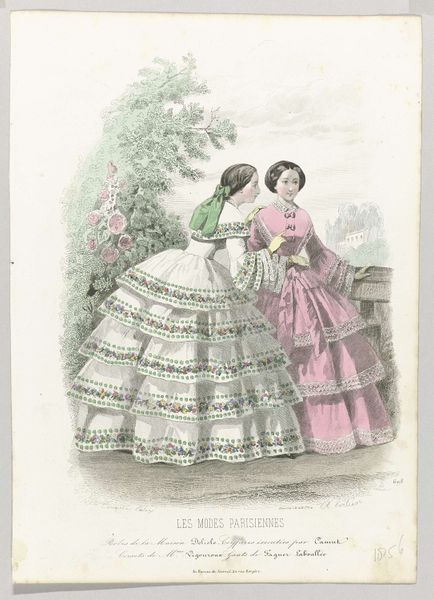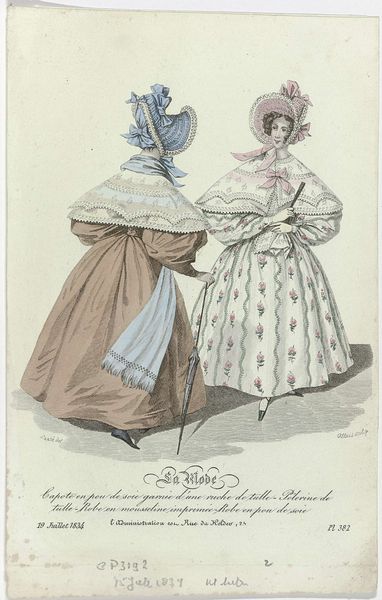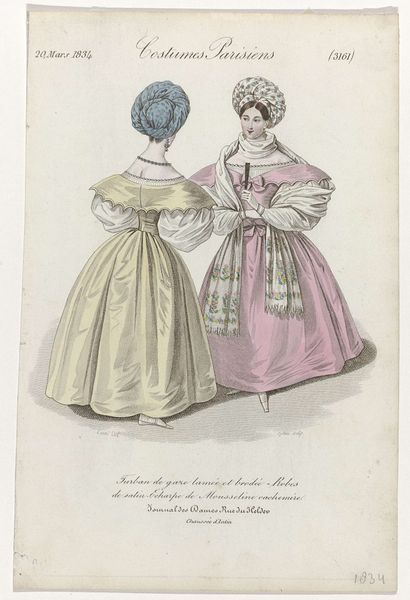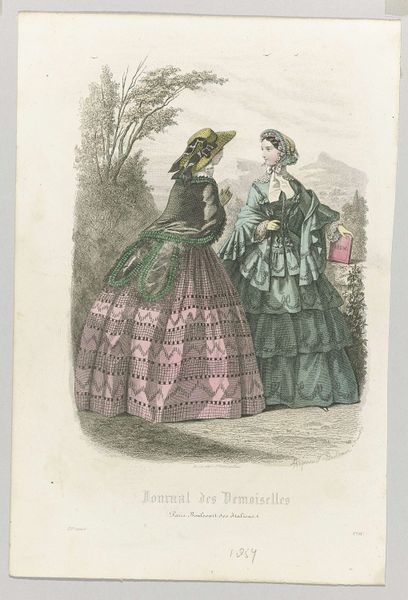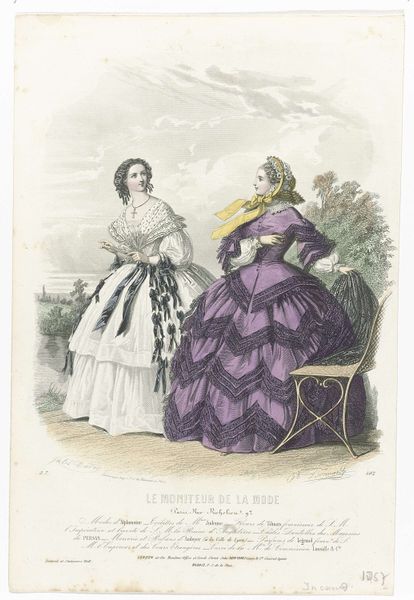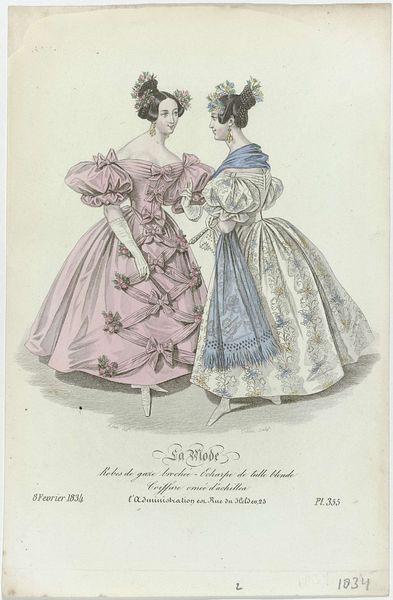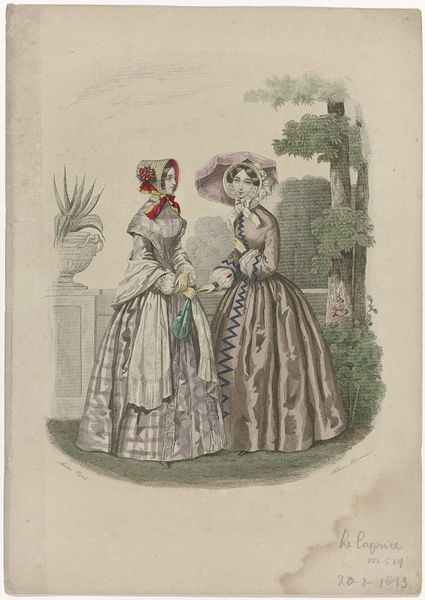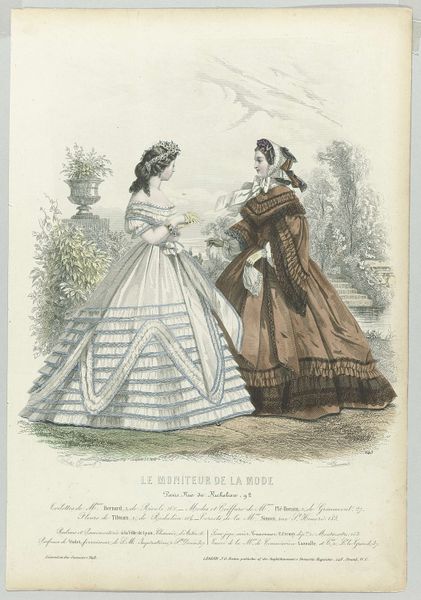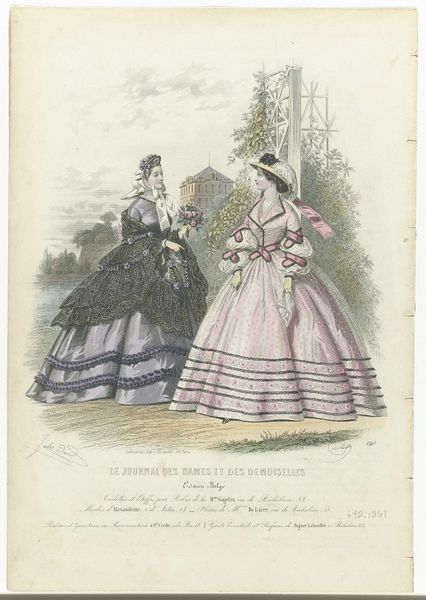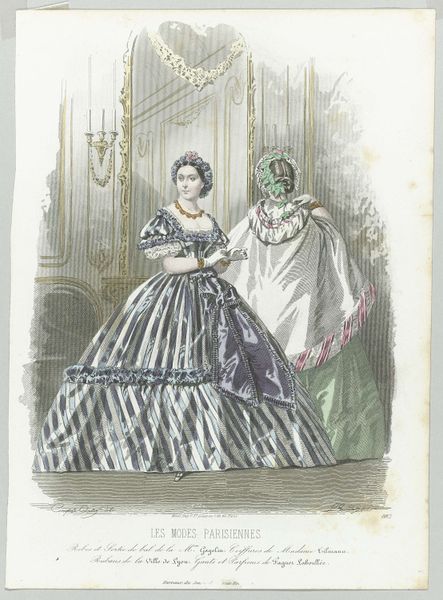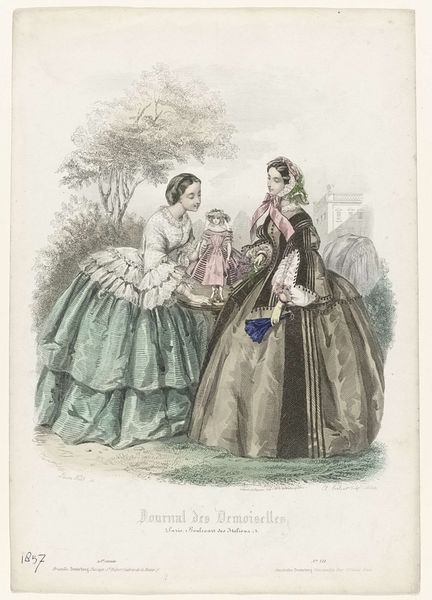
Le Journal des Dames et des Demoiselles, Edition Belge, 1854, No. 403 : Chapeau d'Alexandrin (...) 1854
0:00
0:00
Dimensions: height 269 mm, width 187 mm
Copyright: Rijks Museum: Open Domain
Editor: This is "Le Journal des Dames et des Demoiselles," a lithograph from 1854 by Jean-Baptiste Réville, depicting two women in elaborate dresses. I’m immediately struck by the strong vertical composition, emphasized by the women's height and the striped skirt, against the backdrop of ships. How do you read the formal arrangement of shapes and colours in this print? Curator: Indeed, the verticality is key. Observe how Réville utilizes line – particularly in the etching and engraving of the clothing – to guide the eye upwards. Note the contrast between the delicate, almost lace-like details of the bonnets and sleeves and the broad, sweeping lines that define the skirts. The colors, applied through coloured pencil and lithography, serve to further differentiate the figures and draw attention to the textures. Consider the placement of the figures in relation to the horizon line: how does this affect your perception of depth? Editor: I see what you mean. The higher horizon flattens the space. And the different textures on each woman are clear; one with smooth, layered fabric and the other with harsher striped lines. Does this contrast hold any significance? Curator: Precisely. Réville masterfully orchestrates a visual interplay between softness and rigidity. It encourages viewers to compare and contrast these textural elements and their juxtaposition within the composition. What impression do you derive from their stance, these figures positioned side by side? Editor: Well, their hands are lightly clasped, suggesting some kind of connection, yet the differences in dress and the slightly flattened perspective keep them somewhat separate. They are unified, but individually expressed through detail. Curator: An astute observation. This artwork functions as an aesthetic study in contrasts, and this generates visual tension and provides an enriching, immersive experience for the viewer. Editor: Thank you; seeing it that way really clarifies my understanding of how it works. Curator: It has been a productive exploration indeed. The application of Formalism enables us to identify compositional features and grasp a deeper understanding.
Comments
No comments
Be the first to comment and join the conversation on the ultimate creative platform.
